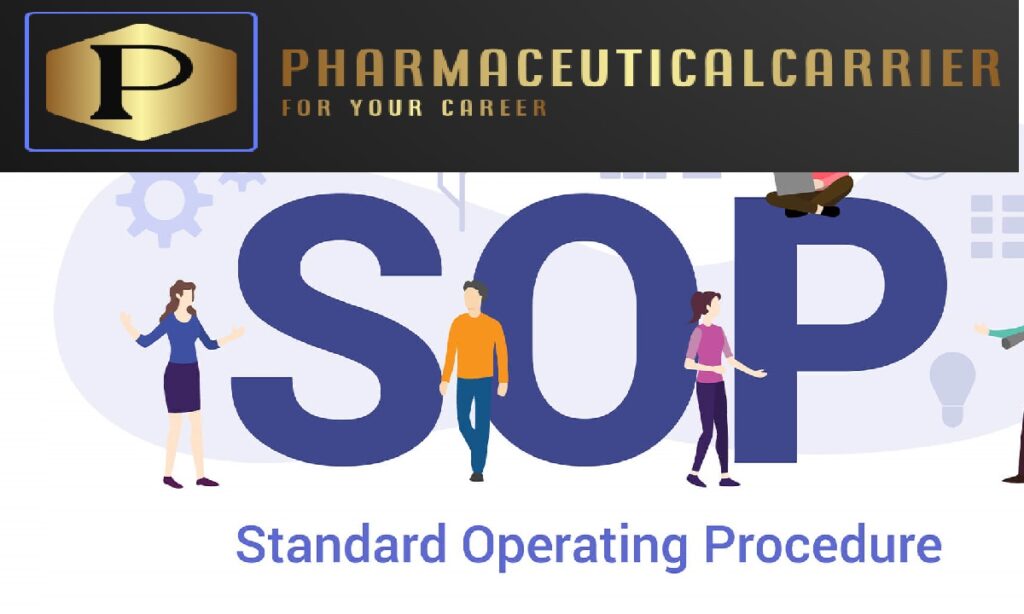1. Purpose:
1.1 This SOP outlines the procedure for the calibration of Conductivity/TDS (Total Dissolved Solids) meters to ensure accurate and reliable measurements.
2. Scope:
2.1 This procedure applies to all Conductivity/TDS meters used in [Your Organization Name/Location].
2.2 The calibration should be performed at regular intervals as specified by the manufacturer or according to the laboratory’s quality control schedule.
3. Responsibilities:
3.1 Lab Supervisor:
3.1.1 Oversees the entire calibration process.
3.1.2 Assigns specific personnel to carry out calibration activities.
3.1.3 Ensures that the SOP is followed and compliance is maintained.
3.1.4 Reviews calibration results and addresses any deviations.
3.2 Lab Technicians/Operators:
3.2.1 Execute the calibration steps according to the SOP.
3.2.2 Handle the Conductivity/TDS meter with care to prevent damage.
3.2.3 Report any observed issues or irregularities during the calibration.
3.2.4 Maintain cleanliness of the equipment before and after calibration.
3.3 Quality Control Officer:
3.3.1 Conducts periodic audits to ensure adherence to calibration procedures.
3.3.2 Reviews calibration records and ensures documentation completeness.
3.3.3 Collaborates with the Lab Supervisor to address any quality concerns.
3.3.4 Proposes corrective actions for continuous improvement.
3.4 Maintenance Personnel:
3.4.1 Regularly inspects and maintains the condition of the Conductivity/TDS meter.
3.4.2 Addresses any equipment malfunctions promptly.
3.4.3 Coordinates with Lab Technicians to schedule routine maintenance without disrupting operations.
4. Communication:
4.1 Team Meetings:
4.1.1 Conduct regular meetings to discuss upcoming calibrations and address concerns.
4.1.2 Provide a platform for technicians to share insights and experiences.
4.2 Reporting:
4.2.1 Lab Technicians report calibration results promptly to the Lab Supervisor.
4.2.2 Any deviations or issues observed during calibration are reported immediately.
5. Training:
5.1 Ensure that all personnel involved in the calibration process are adequately trained.
5.2 Periodic refresher training sessions should be conducted to keep the team updated on any changes to the calibration procedures.
6. Documentation:
6.1 Maintain comprehensive records of personnel responsibilities, including assigned tasks and completed calibrations.
6.2 Document any issues or deviations from the SOP and the actions taken to address them.
4. Materials and Equipment:
4.1 Conductivity/TDS meter
4.2 Calibration standards (single or multi-point solutions)
4.3 Distilled or deionized water
4.4 Clean, lint-free cloth
4.5 Disposable gloves
5. Procedure:
5.1 Preparation:
5.1.1 Ensure the Conductivity/TDS meter is clean and free from any contaminants.
5.1.2 Check that the calibration standards are within their expiration dates.
5.1.3 Verify that the meter is in good working condition, with no visible damage.
5.2 Initial Setup:
5.2.1 Power on the Conductivity/TDS meter and allow it to stabilize for at least 15 minutes.
5.2.2 Connect the electrode to the meter according to the manufacturer’s instructions.
5.3 Calibration:
5.3.1 Immerse the electrode in a calibration standard solution with a known conductivity value.
5.3.2 Allow the meter to stabilize and record the reading.
5.3.3 Rinse the electrode with distilled or deionized water and gently pat it dry with a clean cloth.
5.3.4 Repeat the process with additional calibration standards if required by the meter specifications.
5.4 Adjustment (if necessary):
5.4.1 If the readings deviate from the expected values, consult the manufacturer’s instructions for adjustment procedures.
5.4.2 Make necessary adjustments following the recommended procedures.
5.5 Final Check:
5.5.1 Immerse the electrode in a separate calibration standard to confirm accurate readings.
5.5.2 Document the final calibration readings and ensure they fall within the acceptable range.
6. Documentation:
6.1 Documentation Requirements:
6.1.1 Calibration Log:
6.1.1.1 Maintain a centralized calibration log that includes details such as date, time, meter ID, and personnel involved.
6.1.1.2 Log the calibration standard values used and any adjustments made during the process.
6.1.2 Calibration Certificates:
6.1.2.1 Attach calibration certificates provided by the standard solution manufacturer for each calibration standard used.
6.1.2.2 Ensure certificates include the solution’s traceability to national or international standards.
6.1.3 Meter Identification:
6.1.3.1 Clearly label each Conductivity/TDS meter with a unique identifier.
6.1.3.2 Document the meter’s make, model, and serial number for easy reference.
6.1.4 Personnel Signatures:
6.1.4.1 Require all personnel involved in the calibration process to sign the relevant documentation.
6.1.4.2 Signatures indicate acknowledgment and accountability for the calibration activities performed.
6.1.5 Deviation Reports:
6.1.5.1 Document any deviations from the standard operating procedure.
6.1.5.2 Include details on the nature of the deviation, actions taken, and signatures of personnel involved in addressing the deviation.
6.2. Recordkeeping:
6.2.1 Storage:
6.2.1.1 Store all calibration records in a secure and accessible location.
6.2.1.2 Ensure protection from environmental factors that could compromise the integrity of the documentation.
6.2.2 Duration:
6.2.2.1 Retain calibration records for a minimum period specified by regulatory requirements or organizational policies.
6.2.2.2 Facilitate easy retrieval during audits or inspections.
6.3. Accessibility:
6.3.1 Ensure that calibration records are readily accessible to authorized personnel.
6.3.2 Implement digital or physical filing systems for efficient record retrieval.
7. Training:
7.1 Ensure that personnel involved in the calibration process are trained and familiar with the procedures outlined in this SOP.
7.2 Conduct periodic refresher training to keep personnel updated on any changes to the calibration process.
8. References:
8.1 [List any relevant manuals, standards, or guidelines.]
9. Revision History:
9.1 Document any changes made to this SOP, including the date of revision and the person responsible for the update.
10. Approval:
10.1 This SOP is approved by [Name and Position of Approving Authority].
10.2 Review and update the SOP annually or as needed.
For more articles, Kindly Click here.
For pharmaceutical jobs, follow us on LinkedIn
For Editable SOPs in word format contact us on info@pharmaceuticalcarrier.com
For more information kindly follow us on pharmaguidelines.co.uk

